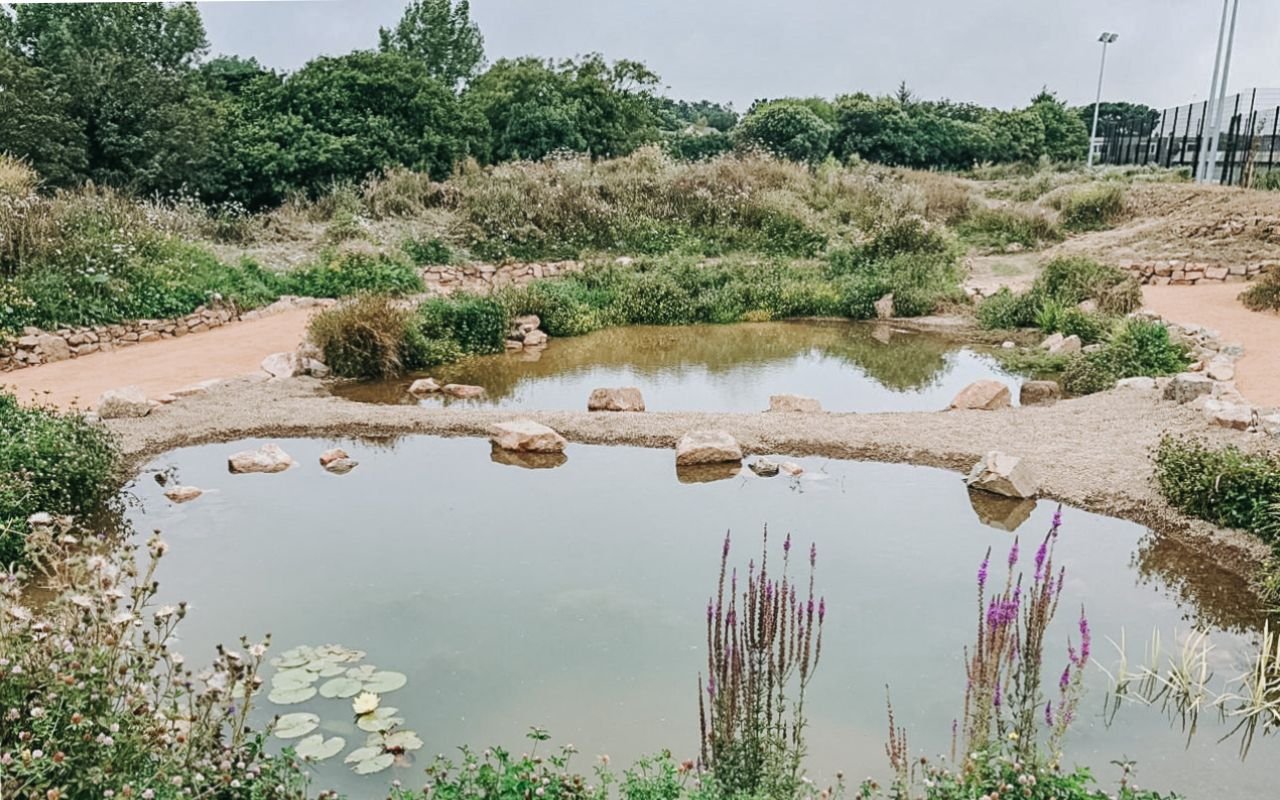Conway Tower -
Wayside, St Brelade's Bay
Project Area
Ecology & Habitats
Specialism
Protected Species & Habitat Creation
Year
2017 – 2022
This was a complicated project whereby the buildings within a 5,000m2 coastal strip around the former Wayside Café were proposed for demolition and clearance, with a new café, accommodation, shop and houses proposed.
Ecological surveys confirmed the presence of high numbers of protected reptiles (green lizards and slow worms), as well as protected amphibians, small mammals, plants and birds within the coastal habitats. We worked extensively with the States of Jersey Land Resource Management Team to provide a suitable mitigation strategy and habitat creation plan to allow the proposed development works to be passed by Planning, with the ecological considerations being a key part of the eventual passing of this Planning Application.
The difficulty was that this site was ‘isolated’ in ecological terms, with very little suitable surrounding habitat to flush or translocate protected wildlife into. As such, an ‘onsite receptor site’ needed to be created and established before clearance works of the site commencing, so that any animals found could be translocated to safe and suitable habitats onsite.
Short-term mitigation
Phasing of works was a major part of these works, with areas of habitat adjacent to the promenade created and enhanced to make them suitable to receive and support the identified protected species groups, before an area of the main site being cleared.
Dune creation therefore occurred in three stages over a 3 year period. This approach allowed works to commence in other parts of the site whilst new areas of habitat were created ahead of the next area of the development site being cleared.
A ‘one way’ exclusion fence was erected around the core development area, so that any animals translocated or flushed out of the works area could not return.
A multi-phased trapping and translocation of reptiles (and any other protected wildlife) found within the works area / under our survey mats was undertaken, with animals placed over the exclusion fence into the newly created sand dune habitat.
A directional and phased vegetation cut was undertaken to drive any remaining animals out of the works area and into the receptor site.
These works were all undertaken in autumn and spring (outside of the main breeding and hibernation period) to reduce any impact on this species group during sensitive life-cycle stages.
‘Tool-box talks’ and ecological supervision were required to ensure any work by the demolition/clearance contractors was done sensitively and Ecologists were on site when hotspot areas for wildlife were cleared, to allow any animals uncovered to be rescued and taken to the receptor site.
Management and removal of invasive plant species from the new receptor site and sand dune areas.
A Habitat Management Plan was written for the long-term management of the sand dune habitat created on-site.
Long-term enhancement
Approx 1,000m2 of sand dune habitat was created by digging out suitable sand from other areas of the site, forming undulating and natural ‘dunes’ on the coastal part of the site, turf translocation of suitable plant species, and the planting of thousands of ‘plug plants’ of marram grass.
Dry stone walls, tree stumps and log piles were also incorporated into the landscaping to create additional wildlife features.
The sand dune has become a major focal point and landscape feature of this development and created a lovely ‘natural’ backdrop to St Brelade’s Bay where so much other development and habitat loss has already occurred.
We continue to manage this habitat on behalf of the client and frequently encounter the protected wildlife groups that were translocated here.
Highlight Projects


















